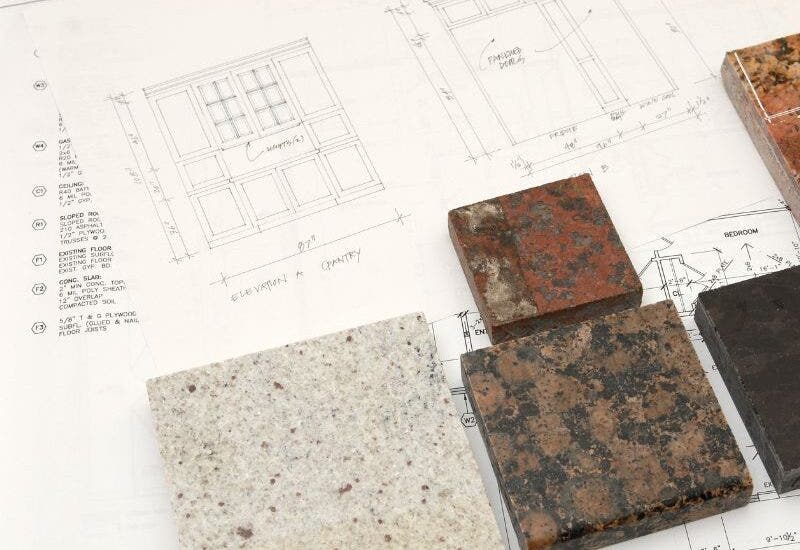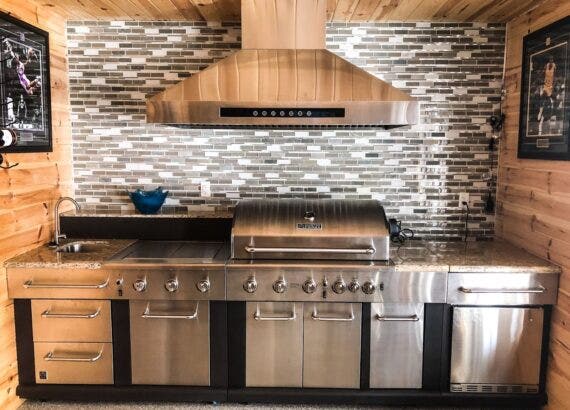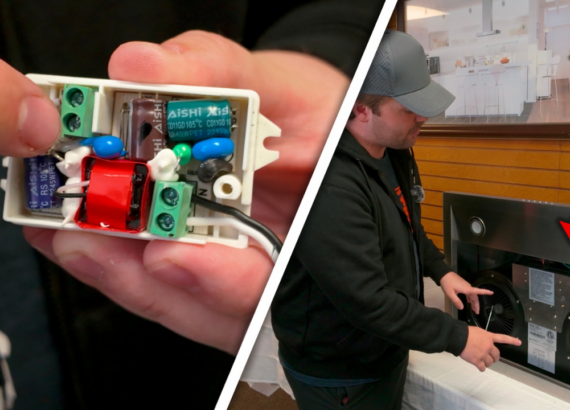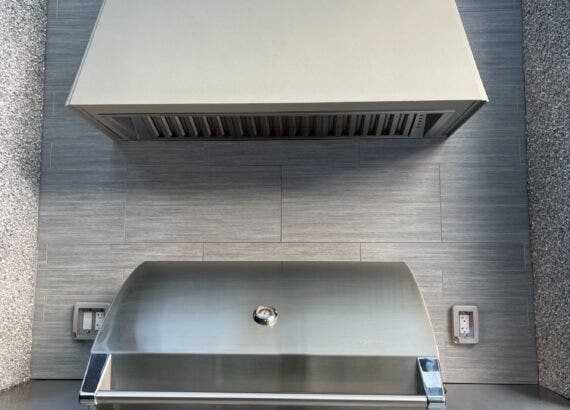What to Look for When Hiring an Interior Designer (Expert Tips)

Hiring an interior designer can be a game-changer when you want to enhance your living space’s aesthetics and functionality. But with so many professionals to choose from, it’s essential to ensure you’re making the right choice for your needs and design preferences.
First impressions matter, and a good interior designer will have an eye for detail and be able to communicate their vision for your space effectively. They should be able to demonstrate their expertise through their portfolio, showcase their creativity through mood boards, and have a knack for understanding your taste and preferences.
Beyond their design talents, experienced interior designers will also be able to manage a project from start to finish. This includes space planning, layout optimization, selecting the right furniture and soft furnishings, and coordinating with other professionals like painters, electricians, and flooring experts to bring the design to life.
Table of Contents
Portfolio and Design Style
When hiring an interior designer, reviewing their portfolio and design style is crucial to ensure they align with your preferences and requirements.
Personal Aesthetic
First, take a look at their aesthetic by browsing through their portfolio. This will give you an idea of their signature style and help you understand their design approach. Do you see a recurring color palette or design motif? Does their style match your own taste and vision for your space?
Note that an experienced designer should be able to adapt their aesthetic to suit various design styles. They should be able to listen and understand your vision and adjust accordingly to create a cohesive and personalized space for you.
Past Projects
Next, explore the designer’s past projects to get a feel for their level of expertise and how they handle various types of spaces. Consider the questions:
- What types of spaces have they designed? Are there any similarities to what you have in mind?
- How do they approach different design challenges, such as small spaces, unique layouts, or varying budgets?
- Are their past projects visually stunning and functional at the same time?
Ultimately, reviewing their portfolio and design style should make it easier for you to select a professional who both meets your needs and understands your vision. Keep in mind that open communication and a shared creative goal are essential to achieving the perfect space for you.
Experience and Credentials
Let’s look at the importance of years of experience, certifications, and memberships.
Years of Experience
As you evaluate potential interior designers, take note of their years of experience in the field. A designer with a proven track record can better meet your expectations and avoid common pitfalls. Ask yourself: have they worked on similar projects? Can they provide examples of their previous work? A designer with a solid portfolio will instill confidence in their ability to tackle your project.
Certifications
Certifications are another aspect to consider. Although not always mandatory, they demonstrate an interior designer’s commitment to education and maintaining industry standards. Some reputable certifications include the National Council for Interior Design Qualification (NCIDQ) in the United States and the British Institute of Interior Design (BIID) in the United Kingdom. Check if the designers you’re considering have any notable certifications that match your project’s needs.
Memberships
These memberships indicate that the designer is dedicated to staying current with trends, participating in continuing education, and adhering to a code of ethics. Some prominent organizations include the International Interior Design Association (IIDA) and the American Society of Interior Designers (ASID). If a designer is an active member of such organizations, it speaks to their level of professionalism and dedication to the industry.
Communication and Collaboration
Consider their ability to communicate and collaborate effectively. Great communication and collaboration skills can make a significant difference in the success of your project.
Openness to Client Ideas
A good designer should be open to your ideas and able to incorporate them into the project. This doesn’t mean they should blindly follow your every whim. Instead, they should actively listen to your suggestions, ask questions to clarify your preferences and provide valuable input to find the best solutions. When you share your thoughts, are they receptive and encouraging? This openness allows for a harmonious working relationship and ensures your unique style and taste are considered.
Effectiveness in Conveying Concepts
Another essential quality of interior designers is their ability to convey their design concepts effectively. A designer should be skilled at articulating their design vision to you and other stakeholders, such as contractors and suppliers.
Can they present sketches, renderings, or mood boards that clearly communicate their ideas?
Do they explain their reasoning behind design decisions persuasively?
Their presentation skills can help ease your concerns, keep the project on track, and ensure everyone is on the same page.
A designer with excellent communication and collaboration skills ultimately allows for a smoother, more enjoyable process. With a better understanding between all parties involved, the potential for creative solutions and a more successful outcome increases.
Related: How to Hire and Work with an Interior Designer like a Pro
Project Management Abilities
This will help you ensure that your project runs smoothly and efficiently. Below are some key aspects to look for:
Timeline Adherence
Ask yourself: Can the designer adhere to deadlines and manage their time effectively? Your interior designer should be able to establish realistic schedules and have consistant communication about their progress. Look for a designer with a proven track record of delivering projects on time. This will give you peace of mind and confidence that your project will be completed efficiently without any unwanted delays.
Budget Management
An excellent interior designer will not only create stunning designs but will also be able to work within your budget constraints. Assess their previous projects and ask for references to see how well they have managed budgets in the past. Remember, you want a designer who can deliver high-quality results without causing financial stress.
Vendor and Contractor Coordination
Lastly, your interior designer’s ability to coordinate with vendors and contractors will greatly impact the success of your project. A skilled designer will have connections with reliable and trustworthy suppliers, ensuring that you receive high-quality materials and products at competitive prices.
Furthermore, they should be able to collaborate effectively with contractors, maintaining an open line of communication and resolving any conflicts that may arise during the process. This is essential to ensure that your project stays on track and is completed to your satisfaction.
Review and Testimonials
When hiring an interior designer, it’s essential to consider the reviews and testimonials from their previous clients.
Client Satisfaction
First and foremost, you should pay attention to the overall satisfaction of the designer’s previous clients.
Were they happy with the results?
Did the designer take their vision and turn it into a reality?
Reading through testimonials can give you a good sense of not only the designer’s talent but also their ability to communicate and collaborate with their clients.
Ask yourself:
- Do the testimonials highlight the designer’s ability to listen and understand their client’s needs?
- Are the clients satisfied with the project outcomes and final results?
Consistency in Delivery
Are there several testimonials mentioning the designer’s ability to meet deadlines and deliver within budget constraints? Or do you see a pattern of complaints regarding missed deadlines and unexpected costs? A consistent track record is a strong indicator of a designer’s professionalism and reliability.
To gauge consistency in delivery, you can:
- Look for patterns in the reviews, both positive and negative
- Reach out to previous clients directly, if possible, to gain further insight
Remember, finding the right interior designer takes time and research. But reviewing testimonials and considering client satisfaction and consistency in delivery can greatly help you make the right choice.
Pricing and Financial Policies
Fee Structure
It’s crucial to understand their fee structure. Designers may charge by the hour, with rates ranging from $50 to $500, depending on their experience level.
On average, you can expect to pay $100 to $200 per hour. Alternatively, designers might work on a flat fee basis, which can vary widely depending on the project size and scope.
Some may even charge a minimum fee of $40,000 for full construction and furnishing services. Understanding a designer’s fee structure will help you plan your budget accordingly.
Payment Terms
Will you need to pay a deposit upfront? Are there milestone payments to be made throughout the project? How are the final payments handled upon completion? Discussing these terms with the designer will ensure a smooth and mutually beneficial working relationship.
Project Budget Estimation
Lastly, it’s essential to have a clear understanding of the overall project budget estimation before starting. This includes not only the fees for the designer but also the costs of furniture and accessories, which can vary based on their markup and fee structure.
Most people spend between $1,900 to $11,200 for consultation, design work, management, and furnishings. By knowing your budget, you can make informed decisions and minimize the likelihood of any unpleasant surprises later on.
Conclusion
It’s essential to pick someone who understands your unique preferences and has a proven track record of enhancing spaces while keeping your budget in mind.
Remember that communication and collaboration are crucial aspects of developing a successful working relationship with your interior designer. Take the time to ask the right questions and ensure they share the same vision and passion for design as you do.
- Review their portfolio and services
- Establish a clear budget
- Understand the design process and timeline
- Ensure open communication and collaboration
By considering these factors, you’re on your way to creating a space that truly reflects your personality and lifestyle while maximizing functionality and beauty.







Comments are closed.